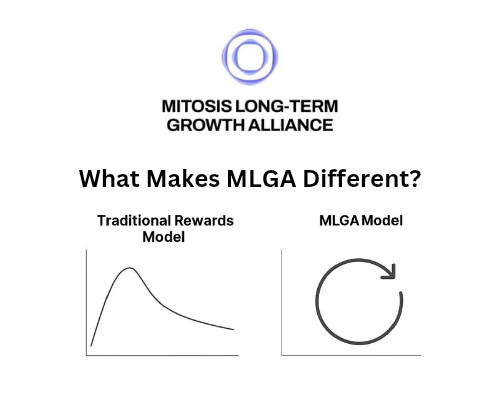DeFi-Native ETFs: Building On-Chain Index Funds That Auto-Adjust Based on Market Metrics

Introduction
The world of finance is undergoing a seismic shift with the advent of decentralized finance (DeFi). Among the most innovative products emerging from this space are DeFi-native Exchange-Traded Funds (ETFs). These funds leverage blockchain technology to create on-chain index funds that automatically adjust their holdings based on real-time market metrics. This article delves into the intricacies of DeFi-native ETFs, exploring their structure, functionality, advantages, challenges, and future potential.
1. Understanding DeFi and ETFs
1.1 What is DeFi?
Decentralized Finance (DeFi) refers to a financial ecosystem built on blockchain technology that aims to recreate and improve upon traditional financial systems without intermediaries. DeFi applications allow users to lend, borrow, trade, and earn interest on their assets in a decentralized manner. The key features of DeFi include:
- Transparency: All transactions are recorded on a public ledger, allowing for greater accountability.
- Accessibility: Anyone with an internet connection can access DeFi services, removing barriers to entry.
- Programmability: Smart contracts automate processes, reducing the need for intermediaries and enhancing efficiency.
1.2 What are ETFs?
Exchange-Traded Funds (ETFs) are investment funds that are traded on stock exchanges, much like individual stocks. They typically track an index, commodity, or a basket of assets, providing investors with diversified exposure. Key characteristics of ETFs include:
- Liquidity: ETFs can be bought and sold throughout the trading day at market prices.
- Diversification: By holding a variety of assets, ETFs reduce the risk associated with individual securities.
- Cost-Effectiveness: ETFs generally have lower expense ratios compared to mutual funds.
2. The Concept of DeFi-Native ETFs
2.1 Definition and Structure
DeFi-native ETFs are investment vehicles that operate entirely on the blockchain, allowing for the creation of index funds that automatically adjust their holdings based on predefined market metrics. These funds utilize smart contracts to manage assets, execute trades, and rebalance portfolios without human intervention.
2.2 How DeFi-Native ETFs Work
- Asset Pooling: Investors contribute assets to a DeFi-native ETF, which pools these funds into a smart contract.
- Index Creation: The ETF tracks a specific index or a set of assets, such as cryptocurrencies, tokens, or other digital assets.
- Dynamic Rebalancing: The ETF automatically adjusts its holdings based on market conditions, utilizing algorithms that analyze price movements, trading volumes, and other relevant metrics.
- Distribution of Returns: Profits generated from the ETF are distributed to investors based on their share of the fund.
2.3 Balancer-Style Vaults
One of the innovative structures used in DeFi-native ETFs is the balancer-style vault. These vaults allow for multiple assets to be pooled together, with the ability to adjust the weight of each asset based on market conditions. Key features include:
- Flexible Asset Allocation: Investors can define the percentage of each asset in the vault, allowing for customized exposure.
- Liquidity Provision: Balancer-style vaults provide liquidity to the market, enabling efficient trading without the need for constant rebalancing.
- Automated Management: Smart contracts handle the rebalancing process, ensuring that the vault maintains its target allocation.
3. Auto-Adjustment Mechanisms
1. Market Metrics for Rebalancing
DeFi-native ETFs utilize various market metrics to determine when and how to rebalance their portfolios. Some of the key metrics include:
- Price Movements: Significant changes in asset prices can trigger rebalancing to maintain the desired allocation.
- Trading Volume: High trading volumes may indicate increased interest in certain assets, prompting adjustments.
- Market Sentiment: Sentiment analysis tools can gauge investor sentiment and influence rebalancing decisions.
2. AI-Driven Rebalancing
Artificial Intelligence (AI) plays a crucial role in enhancing the efficiency of DeFi-native ETFs. AI algorithms can analyze vast amounts of data to identify trends and make informed decisions regarding asset allocation. Key benefits of AI integration include:
- Predictive Analytics: AI can forecast market trends based on historical data, allowing for proactive adjustments.
- Risk Management: AI can assess the risk associated with different assets and optimize the portfolio accordingly.
- Continuous Learning: Machine learning algorithms improve over time, adapting to changing market conditions.
3. Oracle Integration
Oracles are third-party services that provide real-time data feeds from external sources to smart contracts. In the context of DeFi-native ETFs, oracles play a vital role in ensuring that the funds have access to accurate and timely information for rebalancing. Key functions of oracles include:
- Price Feeds: Oracles provide real-time price data for assets, enabling precise rebalancing decisions.
- Market Data: Oracles can supply additional market metrics, such as trading volume and sentiment analysis, to inform the rebalancing process.
- Reliability: By aggregating data from multiple sources, oracles enhance the reliability of the information used for decision-making.
4. Advantages of DeFi-Native ETFs
1. Reduced Volatility
DeFi-native ETFs can help reduce overall portfolio volatility through diversification and dynamic rebalancing. By holding a variety of assets and adjusting allocations based on market conditions, these funds can mitigate the impact of price fluctuations in individual assets.
2. Accessibility
DeFi-native ETFs democratize investment opportunities by allowing anyone with an internet connection to participate. This accessibility is particularly beneficial for individuals who may not have access to traditional financial markets or investment vehicles.
3. Cost Efficiency
The automation of fund management through smart contracts reduces operational costs, resulting in lower management fees compared to traditional ETFs and mutual funds. This cost efficiency makes DeFi-native ETFs an attractive option for investors.
4. Transparency
All transactions and fund management activities are recorded on the blockchain, providing a high level of transparency. Investors can track the performance of their investments in real-time and verify the fund's operations.
5. Customization
DeFi-native ETFs can offer customizable investment strategies, allowing investors to define their asset allocations and risk profiles. This flexibility enables individuals to tailor their investments to align with their financial goals.
5. Challenges and Considerations
1. Regulatory Landscape
The regulatory environment for cryptocurrencies and DeFi is still evolving, and this uncertainty can impact the operation and acceptance of DeFi-native ETFs. Regulatory compliance is essential for building trust and ensuring the long-term viability of these investment vehicles.
2. Market Risks
While dynamic rebalancing can mitigate some risks, the inherent volatility of the cryptocurrency market remains a significant factor. Investors must be aware of the potential for substantial price fluctuations and the impact on their investments.
3. Technological Dependence
The reliance on smart contracts and oracles introduces risks related to technology failures or vulnerabilities. Bugs in the code or issues with oracle data can lead to unintended consequences, including financial losses.
4. Security Concerns
DeFi platforms have been subject to hacks and exploits, raising concerns about the security of funds. Investors must conduct thorough due diligence and choose reputable platforms to minimize risks.
5. Complexity
The complexity of DeFi-native ETFs may deter some investors, particularly those who are unfamiliar with blockchain technology and decentralized finance. Education and awareness are crucial for fostering broader adoption.
6. Future of DeFi-Native ETFs
1. Growth Potential
As the DeFi space continues to mature, the adoption of DeFi-native ETFs is expected to increase. Institutional investors are beginning to explore DeFi opportunities, and the demand for innovative investment products is likely to grow.
2. Innovative Strategies
Future developments may include more sophisticated AI algorithms and enhanced oracle systems, further improving the efficiency and effectiveness of DeFi-native ETFs. The integration of advanced technologies will enable these funds to adapt to changing market conditions more effectively.
3. Enhanced User Experience
User -friendly interfaces and educational resources will play a crucial role in attracting new investors to DeFi-native ETFs. Simplifying the investment process and providing clear information will help demystify DeFi for a broader audience.
4. Regulatory Clarity
As regulators establish clearer guidelines for DeFi, the legitimacy and acceptance of DeFi-native ETFs are likely to increase. Regulatory clarity will foster trust among investors and encourage institutional participation.
5. Collaboration with Traditional Finance
The convergence of DeFi and traditional finance presents opportunities for collaboration. Traditional financial institutions may explore partnerships with DeFi platforms to offer innovative investment products, including DeFi-native ETFs.
Conclusion
DeFi-native ETFs represent a significant innovation in the investment landscape, combining the benefits of decentralized finance with advanced technologies like AI and oracles. These funds offer unique opportunities for investors seeking exposure to the dynamic world of cryptocurrencies while providing the advantages of diversification, transparency, and cost efficiency.
As the DeFi ecosystem continues to evolve, the potential for DeFi-native ETFs to reshape the investment landscape is immense. However, investors must remain vigilant about the associated risks and challenges. By staying informed and engaged with the DeFi community, individuals can navigate this exciting frontier and harness the power of decentralized finance.
Resources for Further Exploration
- DeFi Pulse: DeFi Pulse - A comprehensive resource for tracking DeFi projects and metrics.
- CoinGecko: CoinGecko - Provides real-time data on cryptocurrency prices and market capitalization.
- Token Metrics: Token Metrics - Offers AI-driven insights and analytics for cryptocurrency investments.
- Balancer: Balancer - Explore the mechanics of balancer-style vaults and liquidity pools.
- Chainlink: Chainlink - Learn about oracle technology and its applications in DeFi.
- Aave: Aave - A leading DeFi lending platform that provides insights into lending and borrowing in the DeFi space.
- Uniswap: Uniswap - A decentralized exchange that allows users to trade cryptocurrencies directly from their wallets.

Comments ()